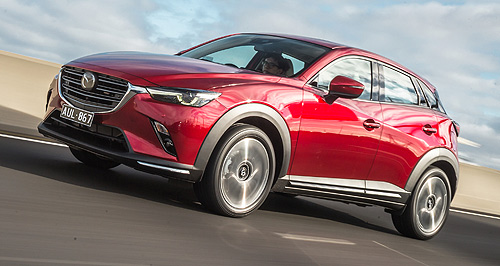News - MazdaMazda keeps faith in diesel enginesDie hard: Diesel engines will remain in Mazda Australia’s line-up for the foreseeable future, with oil-burning powertrains offered in its CX-3, Mazda6, CX-5, CX-8 and BT-50. Diesel to stay in Mazda’s line-up, but more efficient SkyActiv-X could change status28 Aug 2018 By NEIL DOWLING MAZDA Australia will defy global trends of reducing diesel-engined vehicles by retaining an oil-burning line-up as a backstop to potential fuel price rises ahead of the launch next year of its innovative compression-ignition technology.
Diesel engines are currently offered in its BT-50 workhorse, Mazda6 mid-size sedan and wagon, CX-5 mid-size crossover and newly-launched CX-8 seven-seater, while a new 1.8-litre oil-burning unit – replacing a 1.5-litre engine – was introduced to the CX-3 range last week as part of a range-wide update.
However, diesels may have a short lifespan at Mazda as the Japanese car-maker prepares to launch its compression-ignition engine next year in the Mazda3 sedan and hatch under the SkyActiv-X label.
Last week at the launch of the updated CX-3, Mazda Australia marketing director Alastair Doak said potential fuel price rises had kept the diesel safe in the short term.
“We still have some demand for diesel and it’s no real burden on us to bring diesel models into Australia,” he said.
“It has only one per cent of sales as a target in the CX-3. If demand goes up then we’ll be in the fortunate position of selling more.
“If fuel prices continue to remain high then history shows that people turn to diesel because of the economy. So we will have a vehicle to suit.”
Mr Doak said the compression-ignition engine – which uses a fuel and air mixture about three times as lean as a conventional petrol engine – is being launched globally next year in the next-generation Mazda3, but would not be drawn on Australian timing.
As a crucial global market for Mazda, the local launch of the fourth-generation Mazda3 is expected to take place not long after its introduction to international markets.
The current third-generation Mazda3 has been on sale since 2013 and was available, from 2014 until 2016, with a 2.2-litre turbo-diesel engine that is also offered in the Mazda6 mid-sizer and the CX-5 and CX-8 SUVs.
The 2.0-litre SkyActiv-X engine uses a high compression ratio of 16:1 and a very lean fuel mixture. The fuel quantity is so low that a normal engine with spark plugs cannot ignite the mixture, so very high diesel-like combustion pressure is used to create the temperature needed for a clean burn.
Mazda claims SkyActiv-X will have up to 30 per cent better fuel economy – and the same reduction in emissions – than the current 2.0-litre petrol engine with similar power outputs and performance.
Mr Doak said diesel remains on many buyers shopping lists, evident by the sales of Mazda’s diesel-only CX-8 SUV.
“The CX-8 is above target in the first two months we’ve had it. It has done really well for us and is doing exactly what we thought by bringing people into the showroom,” he said.
“They’re either walking out with a CX-8 or a CX-9 so we’re happy with that. We always say that it doesn’t matter which one they buy as long as it’s a Mazda and that they have a great customer experience.
“We have modest targets for the car because that was a factor with supply and demand and the fact that we already have a seven-seater (CX-9) available.”
Since launching in June, Mazda has amassed 376 new CX-8 registrations to the end of July.  Read more29th of June 2018  Driven: CX-8 to give Mazda 3000 first-year salesDiesel-only CX-8 seven-seater to lift Mazda’s large SUV share to around 10 per cent31st of May 2018  New diesel engine for refreshed Mazda CX-3Outgoing 1.5-litre diesel traded for 1.8 in Mazda CX-3 expected in Oz by year’s end |
Click to shareMazda articlesResearch Mazda Motor industry news |
















Facebook Twitter Instagram